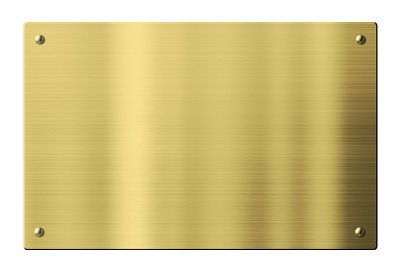Made from a combination of copper and zinc, brass is one of the most popular materials used in metal works. Brass sheet metal, in particular, is widely used in a variety of applications, from decorative pieces to mechanical applications. In fact, you have probably worked with brass sheet metal as part of a project.
Many hobbyists will likely have more than a handful of their projects on display at home where the properties of the metal tend to shine. However, brass sheet metal will lose its luster over time, requiring you to clean it every now and then. The problem is that sheet metal tends to be quite thin. As such, they require a lot of care when cleaning. Otherwise, there’s a significant risk of you damaging the sheet metal you’ve used.
Fortunately, cleaning brass sheet metal is a relatively simple task. This is especially true if the brass sheet metal you used for your project was sourced from respected suppliers like Rotax Metals, assuring you that the quality of the brass is top-notch. With that in mind, here are a few cleaning tips to help make sure your projects stay pristine.
Cleaning Method #1: Slightly Tarnished
Tarnish generally refers to how dark the brass sheet has gotten since the last time you’ve cleaned it. If the brass is only slightly tarnished or only has several spots that are starting to discolor, set the item aside. For this scenario, you’ll need to prepare a tray that you can use to soak the brass sheet in. You’ll then fill this with white vinegar saturated with a generous amount of salt. Once the mixture is complete, soak the bronze sheet. Stubborn spots may be gently scrubbed, but only do so when absolutely necessary.
Cleaning Method #2: Significantly Tarnished
If the tarnish has left the brass quite dark or essentially black in color, you’ll need to prepare a slightly stronger cleaning solution. Add citric acid and water into a pot and bring it to a boil. You may then use this solution to wash and scrub the bronze sheet. Take note that you shouldn’t soak the sheet in this solution as it is usually strong enough to corrode bronze when exposed for too long.
After the Soak
Once you’ve finished cleaning up the tarnish, make sure you immediately rinse the sheet with water to avoid prolonged exposure to acid. Afterwards, use soft cloth to pat dry the bronze sheet to avoid leaving any scratches. When the brass has dried completely, use brass polish to gently restore the shine of the brass. Brass polish sold commercially is recommended as opposed to making your own polish at home. This is because making a mistake with the proportions of your homemade mixture may make it too acidic, which will only damage the brass.
Sources:
How to Clean Metal Naturally, hunker.com
How to Clean Brass, wikihow.com




